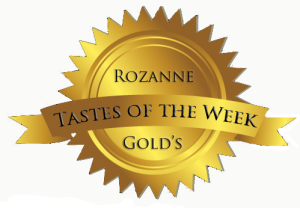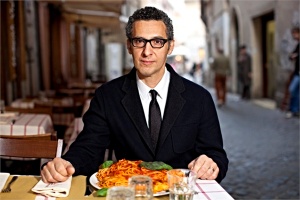This beautiful trip to Campania (the south of Italy) is not all about food, but also about music, discovery, brief encounters with strangers, valuable time with friends, shopping, Duomos, ancient gardens, walking, hiking, and oh, did I mention food? On what promises to be a splendid day of boating along the Amalfi coast from Minori to Positano, I am perched upon a terrace hanging over the sea, at our lovely Hotel Rufolo in Ravello. For my primo colazione, I try a cornetto with homemade quince jam (very sweet!), a few slices of boiled ham and a delicious roll with sweet butter and coarsely ground orange marmellata –also fatta en casa (homemade). I am enjoying the sweet, bitter, and salty notes this morning against a double dose of strong espresso. But alas, this is not all about food.
Cool-ish weather the last few days (with ominous dark clouds at times), had us opt for a hike around Salerno on Sunday. We visited the grand hotels (once palaces) along the “gold coast” of Ravello and ended in the magnificent gardens of the Hotel Cimbrone, the perfect stage set for the wedding that was to take place there. We hiked to the outer reaches of the town, passing organic vegetable patches, grape arbors, and olive trees. We saw hanging “cucuzza” (slender green squashes 3 feet long) which we ate stuffed and steamed one evening (and stuffed, fried and doused in tomato sauce on another.) Day turned into night and the small piazza in the center of Ravello feels smart with tourists (hardly any Americans) who come for the music festival each summer. In the evening, one may roam the gardens of the Hotel Rufolo and visit the tiny museum with its curated show of famous fashions from the opera. (I am reminded of a time decades ago in Florence when Arthur Schwartz and I were guests for dinner in the home of “Biki” – the couturier of Maria Callas.)
Perchance to sleep and then a beautiful drive to Salerno – a real city with a sprawling University, the magnificent Duomo di San Matteo, and the Giardino della Minerva, which we visited in honor of my friend, Dale Bellisfield, clinical herbalist and health care practitioner. Circa 1305, the garden of Minerva is the oldest botanical garden in the Western world and the model upon which all European gardens were developed. One of the plants was the extraordinary “rucola” (arugula) which we have been eating, and it tastes nothing like the arugula we have come to know in the states. Rubbed between our fingers, the earthy, verdant perfume lasted all day.
A ferry ride to Amalfi: The flakiest, crunchiest sfogliatelle filled with pastry cream at Pasticceria Pansa (doing business since 1830), and a quick dinner of alici (anchovies) in the style of Amalfi – lightly fried and “glued” with a bit of cheese. My husband loved them as he did the provolo – smoked cheese grilled between large lemon leaves. For dessert? Chocolate eggplant. But more about that later. Ciao, ciao.








